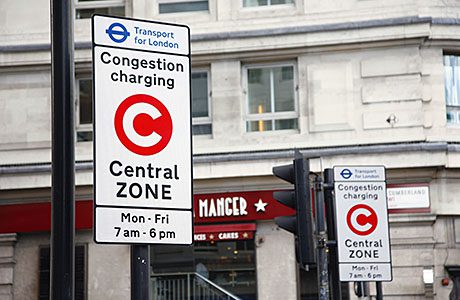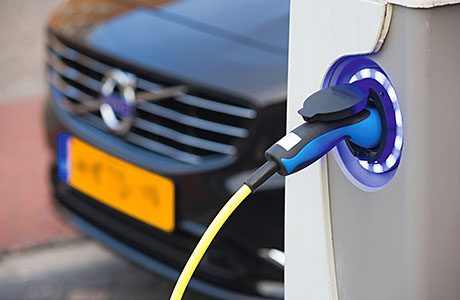Paul Marsh of Envirotec offers an update on attempts to curb air pollution in the UK

IT’S the single biggest environmental health risk in the world, according to the World Health Organisation, and in recent weeks the UN Environment Assembly has also pegged it as an issue requiring “immediate action”.
The UK’s own part in this latest scourge of our age has drawn significant attention over the past year or so, and in recent weeks London has been singled out as the worst place in Europe for the pollutant nitrogen dioxide (NO2), which issues from diesel engines; worse even than Beijing.
It’s a problem to which we all contribute, not just the usual culprits like heavy industry. So it’s an encouraging sign that, in the UK at least, this year has seen “a sea change” in public awareness of air pollution, as Dr Ian Mudway put it at a commons select committee hearing in June.
The urgency of the problem is clear to everyone but – certainly in the UK – there is still debate as to the best measures available for tackling it, and with whom exactly the responsibility lies.
Mudway was one of a five-strong panel appearing at the meeting, held on 26 June, the first public evidence hearing of the UK Environment Audit Committee, which launched an inquiry into UK air quality in May.
The others included Mike Galey of the Environmental Industries Commission; Alan Andrews, an environmental lawyer at Client Earth; Philip Insall of cycling charity Sustrans; and Professor Alastair Lewis of the National Centre for Atmospheric Science.
Taking responsibility
The meeting provided an opportunity for the UK government to comment on the legal action it faces from the EU over air quality, which follows a May 2013 Supreme Court ruling, the result of action brought by Andrews’ own company ClientEarth. A joint submission was presented by DEFRA, which affirmed its role as the lead government department for air quality policy, in addition to other departments whose activities also have a bearing on the issue: DECC, the Department for Transport (DfT), DCLG and the Department of Health.
Commenting on the legal action the Government said that it is “working with the Commission to ensure compliance with the limit values in the UK in the shortest possible time”. There has also been some wrangling over the locus of responsibility, with the Localism Act 2011 appearing to allow the problem – and the responsibility for fines – to be passed on to Local Authorities. They in turn have countered – or at least the London Council’s cross-party think tank did so at the meeting – that this would be unfair. For one thing, the government was already in breach of air pollution targets at the time the Localism Act was being debated, and had less than a year to get an extension from the EU or face a fine of £300m, which it failed to do.
The responsibilities of local authorities for air quality are mentioned in the Environment Act 1995 and the Air Quality regulations (2000). Local Authorities are required to periodically review and assess air quality in their area, which involves measuring air pollution and trying to predict how it will change in the years ahead.
Local Authorities and air quality
The review aims to ensure that the national air quality objectives will be achieved throughout the UK within an agreed timescale, objectives that have been shaped by the perceived effect on human health.
If a local authority finds any places where the objectives are not being met, it must designate the locality in question as an Air Quality Management Area (AQMA). This could be a location as small as one or two streets, or significantly bigger.
Information about AQMAs in the UK is available on the DEFRA website, which has recently been updated to provide new features including a map viewer of the entire UK, with the opportunity to view AQMAs by pollutant (NOx, PM10 and/or SO2) and by area. See uk-air.defra.gov.uk/aqma/maps.

North and south
In Scotland the statutory responsibility for air quality is shared by central and local government, as well as SEPA. Presenting at the Greenfleet Scotland event in Edinburgh in April, Andrew Taylor, Air Quality Policy Manager with the Scottish Government, said that progress with air pollution in Scotland had been “slower than hoped”. A barrier to progress is the fact that “the measures with the biggest impact tend to be expensive or difficult to present”, citing examples such as congestion charges or a large scale move to public transport.
Of the 32 AQMAs in Scotland at the time of his presentation all but one was based on transport emissions of NO2 and particulates.
Restricting certain types of vehicle
Referring to one somewhat under-utilised – at least in the UK – solution to the air pollution created by inner city traffic, Taylor said he still didn’t see a situation where local authorities would be willing to introduce Low Emission Zones (LEZs): Geographically-defined areas where the most polluting vehicles are subject to restricted or discouraged usage.
His own feeling was that LEZs were “not necessarily the right solution for all our low emission and air quality objectives”, citing the national low emission strategy as a much more wide ranging concept, which is not just focused on low emissions standards but encompasses how we link air quality and air pollution into the wider picture of transport management and issues like climate change, renewable energy and planning.
LEZs were also one of the measures discussed during the EAC hearing on 26 June. Germany has around 70 LEZs while the UK currently has only three: In London, Oxford and Norwich. Another one is planned for Brighton in 2015. One suggestion was that there ought to be a national network of LEZs, something that would both curb emissions and ensure consistency in vehicle standards across the whole country.
ClientEarth lawyer Alan Andrews said the London LEZ fell short of its objectives, a fact attributable to “the huge classes of vehicles that don’t come under the scope of the LEZ”. He called for a national network of LEZs, establishing a certification scheme for the retrofit equipment and ensuring coherency between the different LEZs – something which is missing at the moment, with some motorists currently able to drive in certain parts of the country but not others.
He also called for leadership from Central Government, that they should give local authorities the tools they need to implement low emission zones.
EVs take the high road
One promising avenue towards lower emissions might be encouraging more of the population to make the transition to electric vehicles (EVs), currently costly and constrained by factors such as the availability of charging stations (see Envirotec, May-June 2014, p40).
The Scottish Government has declared a commitment to complete decarbonisation of the road transport sector by 2050, with a roadmap that schedules a phasing out of half of all fossil-fuelled vehicles by 2020, with “almost all” new vehicles to be low emissions by 2040.
Speaking on behalf of Transport Scotland at the Greenfleet event, Dr Steven Thomson said that air pollution was a challenge that required “integrated and complex action” and there are many more facets to the issue than simply ensuring low emissions from vehicles. “At the moment there is an interesting debate over whether we should reduce CO2 or better air quality”, he said, citing the fact that a CO2 reduction could be achieved by increasing the use of diesel vehicles, but they are more polluting, being a principal source of NO2 emissions.
Aside from LEZs and the phasing out of particular types of vehicle, the other popular approach, said Thompson, has been to simply keep the traffic moving. At the Greenfleet event, Kenny Bisset shared how Fife Council managed to reduce NOx levels by 53% in its first AQMA in Bonnygate through the use of a traffic queue relocation scheme. This was part of a suite of measures suggested by an action plan drawn up following its designation as an AQMA in 2008.







